
|
|
||
|
|
||
|
Sturgeon Sturgeon are one of the oldest family of bony fish and have evolved very little over time. These fish have inferior mouths, 2 – 4 barbels, or whiskers, and are bottom feeders. Sturgeon are covered with bony plates, not scales like most commonly known fish. |
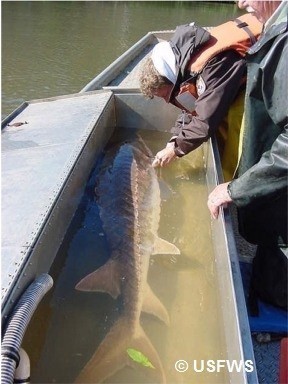
|
|
|
|
||
Gar Another group of fishes that have evolved slowly are gar. Gars are slender, elongated fish with diamond shaped scales. They can breathe under water and can gulp air from the surface. This allows them to live in water that has little oxygen. Gars can be found in freshwater habitats such as rivers, lakes, and bayous. Alligator Gar, Atractosteus spatula, is the largest freshwater fish species in both length and weight in Alabama. This species is mostly found in the Mobile delta but is also found the Tombigbee and Alabama Rivers. Alligator Gar eat the dead remains of other wildlife, as well as fish, birds, turtles, and mammals. |
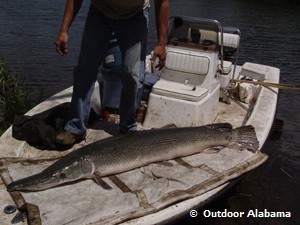
|
|
|
|
||
Suckers Suckers have a subterminal mouth with thick, suckerlike lips. The teeth are located in throat; some species are bottom feeders while others feed in the water column or from the surface. Suckers are found in freshwater environments. Blue Sucker, Cycleptus elongatus, is a slender, steel-blue colored sucker species which lives in Alabama’s large rivers. This fish makes long migrations to reproduce during the spring time and has been impacted by river dams. |
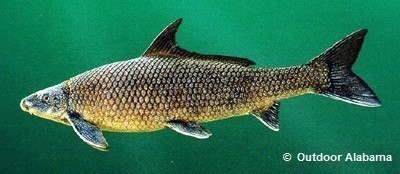
|
|
|
|
||
| Catfish Catfish are scale-less fish with barbels and most species possess spines in their dorsal and pectoral fins which can release venom. Generally bottom dwelling fishes, they use their barbels and skin to sense their food while swimming. There are eighteen species of catfishes in the state, ranging in size from the large yellow catfish to the small madtom species. Stonecat, Noturus flavus, is a smaller species of catfish. Living in the riffles of fast streams, stonecats feed on fish, eggs, crayfish, mussels, snails, and insects. |
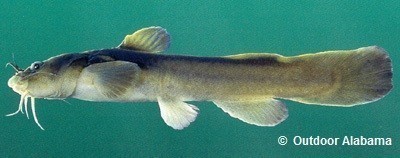
|
|
|
|
||
| Darters Darters are small-bodied freshwater fish that are in the perch family and they represent one of the most diverse groups of freshwater fishes in Alabama. There are approximately 80 species present within the state. Many species of darters are brightly colored, similar to marine fish, and males will change colors during mating season to attract a female. They inhabit flowing and non-flowing water and have names that are indicative of where they live or what they look like. For example, Lollypop Darter, Watercress Darter, Tallapoosa Darter, and Warrior Darter. Warrior Darter, Etheostoma bellator, is found only in the upper Black Warrior River system of the Mobile basin, meaning it is endemic to this area. They can be found in pools and riffles in small to medium sized streams and primarily eat aquatic insect larvae. |
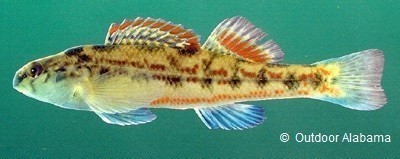
|
|
|
|
||
| For more information on non-game fish in Alabama visit this page on Outdoor Alabama's website. | ||